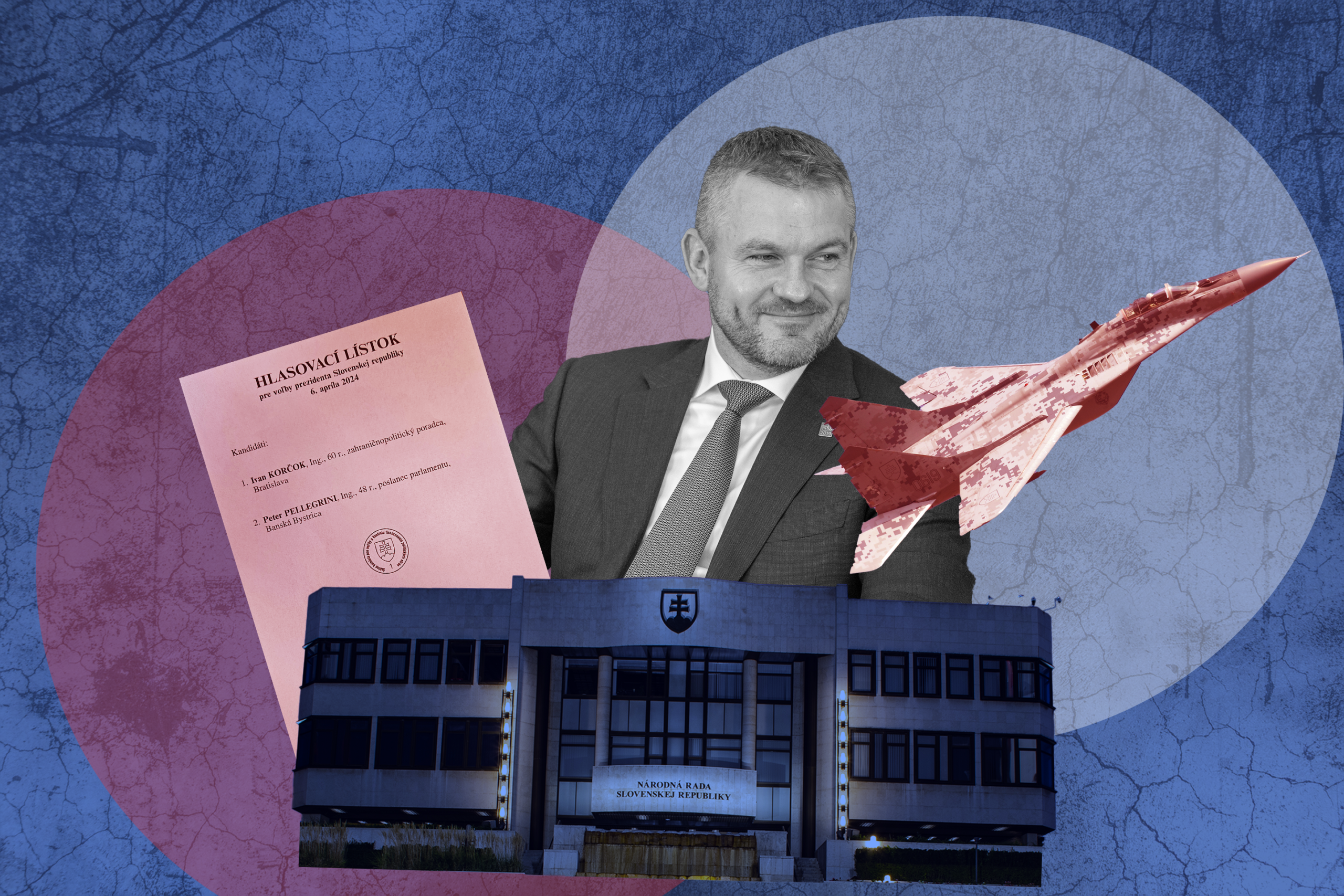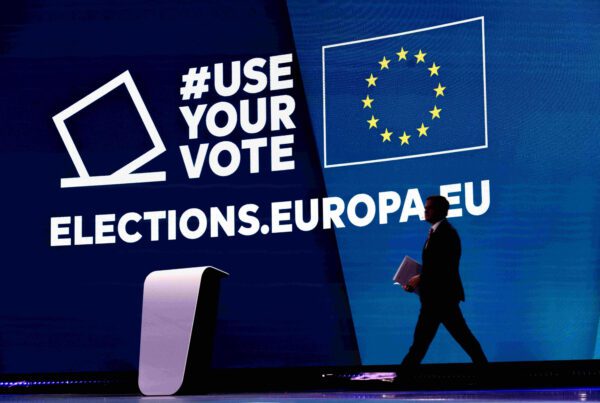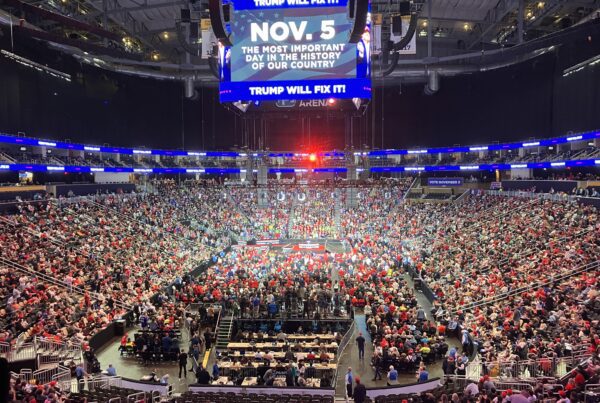Western media reported the results of the recent Slovakian presidential election with a focus on the winner’s geopolitical orientation and his close cooperation with the current prime minister, Robert Fico. Indeed, the newly elected president, Peter Pellegrini, leads the second strongest political party in the current government, the Hlas – SD (Voice – Social Democracy), which split from Fico’s ruling party Smer – SD (Direction – Social Democracy), in 2020. Despite their political differences and personal animosities, in October 2023, Fico and Pellegrini, along with the nationalist SNS (Slovak National Party), formed a government. A notable shift in foreign policy rhetoric has become apparent as Slovakia’s stance transitioned from a reliable supporter of its Ukrainian neighbor to a country that “wants to look at all four cardinal points” and “will not provide military support to Ukraine”. Does this suggest that Slovakian voters opted for a pro-Russian political orientation and rejected democracy, as some local and international journalists imply? What factors influenced the presidential election, and what are the implications for our understanding of democracy and illiberalism?
Slovakia’s presidential election in a broader political context
The presidential election witnessed a notable surprise in the form of high voter turnout, with over 61% of voters participating in the second round. This marked the second-highest turnout in the history of direct presidential elections in Slovakia, surpassed only by the inaugural election in 1999. Both candidates exceeded expected levels of voter mobilization, yet Peter Pellegrini, Speaker of Parliament and candidate of the current government, emerged as the victor with 53.12% of the votes. Falling short by approximately 160,000 votes was Ivan Korčok, a pro-Western civic candidate supported by opposition parties and former diplomat, who previously served as minister of foreign affairs.
Yet, Korčok received more votes than the incumbent president Zuzana Čaputová did five years ago, indicating a significant level of voter mobilization. His supporters were galvanized by the current government’s ruthless exercise of power. Following the parliamentary election in autumn 2023, Robert Fico reclaimed the position of prime minister, fueled by rage and driven by a desire for revenge. Fico had previously resigned in 2018 amidst the nationwide protests that followed the murder of investigative journalist Ján Kuciak and his fiancée Martina Kušnírová, which occurred concurrently with revelations of corruption scandals reaching the highest levels of politics and the judiciary. In his stead, Peter Pellegrini assumed the role of prime minister but soon departed from the Smer party, which faced an uncertain political future.
The subsequent parliamentary election paved the way for the formation of an anti-Fico government, which campaigned against corruption and Robert Fico and his allies. However, amidst the challenges posed by the pandemic and the ensuing economic crisis, the government—led by the unpredictable prime minister Igor Matovič (of the OĽANO party) and later his party colleague Eduard Heger—struggled with instability and frequent conflicts among coalition partners. At a time when clear communication and stable leadership were crucial, i.e., during the global pandemic, the government’s response was marred by confusing and constantly changing measures, along with public displays of aggressive arguments. This led to a significant decline in people’s trust in the government, which plummeted from 47% in April 2020 to a mere 11% in February 2022. While trust in other public institutions such as the president, scientific, or healthcare institutions also declined, Slovaks viewed their government with the least trust among all EU countries. Following the premature collapse of the coalition, the country was steered by a government of experts appointed by President Zuzana Čaputová. The crises, political instability among Fico’s opponents, institutional destabilization, and the subsequent rise of disinformation and the far-right created fertile ground for Robert Fico’s comeback.
Government’s power play and civic protests
From the outset, the government of Smer, Hlas, and SNS embarked on unprecedented measures that would have been unimaginable just a few years ago. Individuals who had faced prosecution, or whose associates had, were instrumental in introducing a sweeping amendment to the Criminal Code. This amendment was rushed through parliament via a fast-track process which deprived experts and the broader public of the opportunity to provide feedback and engage in discussion. Its implementation threatened to undermine the rule of law and shield many politicians, including members of the current government, from further investigations and consequences. Moreover, the hasty preparation and accelerated legislative process also led to unintended consequences, such as the shortening of the statute of limitations for rape. President Zuzana Čaputová intervened by referring the amendment to the Constitutional Court for review, thus temporarily suspending major portions of it. While the role of the president in Slovakia is largely symbolic, instances like this one suggest that the president can indeed have a tangible impact on domestic politics and the system of checks and balances.
At the same time, those aspects of the Criminal Code reform that came into effect dismantled the special prosecutor’s office, which dealt with corruption and serious crimes, including those related to the misuse of EU funds. The European Commission has expressed concerns about the implications for the rule of law. Moreover, it warned that certain elements of the reform would not be in compliance with the directive on fighting fraud against the EU’s financial interests using criminal law. As a result, funds that Slovakia was meant to receive from the EU recovery plan are now at risk.
In addition to the justice system and the police, there has been tremendous pressure on civil society, culture, and media. The minister of culture, Martina Šimkovičová (SNS), who worked for a pro-Russian media outlet known for spreading disinformation, has been systematically working to strengthen political influence in independent cultural institutions. Without proper justification and abruptly, she dismisses the management of some cultural institutions—such as the children’s art house, or the national library—and replaces them with individuals whose primary qualification is often their loyalty to the minister.
A significant overhaul in the operation of public television and radio is underway, with politicians openly expressing their intention to assert control over broadcasting content, which they perceive as currently too oppositional and poorly balanced. Those spearheading these changes often include individuals associated with conspiracy media. Consequently, it comes as little surprise that the government is boycotting certain mainstream media outlets and opting instead for more favorable interactions with what they label as “citizen’s media,” often comprising conspiracy journalists.
Once again, civil society is under financial attack as the minister of culture aims to restructure the Slovak Fund for the Promotion of the Arts, the primary source of funding for artists and cultural NGOs in the country. Additionally, minister of justice Boris Susko (Smer) abruptly canceled the call for applications for grants under the Human Rights 2024 program, the last remaining human rights call supported by the state, without providing any explanation.
The response to these actions has been robust and multifaceted, occurring on both political and civic fronts. Hundreds of thousands of signatures have been collected under numerous petitions, while workers in cultural institutions have staged protests, with some resigning from their positions. Additionally, regular street protests organized by opposition parties and civic actors have been ongoing for months. In response to the government’s refusal to provide military support to Ukraine, Slovakian donors collected 3.9 million euros in 14 days through the civic collection “Ammunition for Ukraine.”
Presidential campaign: the threat of government vs. the threat of war
Ivan Korčok capitalized on the strong mobilization against the government, positioning himself as a “counterbalance” in the presidential campaign. Supported by pro-Western opposition parties, he pledged to serve as a critic of the government and strengthen checks and balances in Slovak politics.
Korčok crafted an image of a candidate deeply rooted in the European Union and NATO, with politics clearly oriented towards the West and in support of Ukraine. This alignment resonated with Korčok’s background as a diplomat and former minister of foreign affairs. He also emphasized the need to reclaim patriotism from those who misuse it for hateful purposes, although this message seemingly missed the opportunity to offer alternative interpretations of patriotism that could resonate with a broader audience, especially considering the region’s instability and the need for societal resilience.
While Korčok’s campaign website covered various topics such as healthcare, financial struggles, and youth migration, the overarching theme remained the threat of the current government. Despite securing the most votes in the first round of the election due to anti-government sentiment and his pro-Western stance, this proved insufficient in the closely contested second round, which was one of the tightest presidential elections in Slovakia’s history.
As Speaker of Parliament and one of Slovakia’s most trusted politicians, Peter Pellegrini held an advantage over the less-known Ivan Korčok, whose most visible role was as minister of foreign affairs in the widely distrusted government of Igor Matovič and Eduard Heger. Non-governmental organizations monitoring the campaign highlighted concerns regarding Pellegrini’s lack of transparent financing and discrepancies between his declared bank account and actual campaign expenditures.
While Pellegrini himself sought to maintain an image of calm and friendliness, his colleagues and supporters ran a divisive campaign, echoing the aggressive rhetoric of the current government. The campaign focused on two main themes: the perceived threat of Slovakia becoming involved in Russia’s war in Ukraine, and concerns about material insecurities and rising living costs. Pellegrini thus managed to address two of the most pressing issues for Slovaks, as shown in the Eurobarometer survey conducted in autumn 2022: 95% of respondents worried about the rising cost of living, for example, increasing food and energy prices, and 85% of respondents worried about the spread of the war in Ukraine to other countries. By addressing these pressing issues, Pellegrini positioned himself as the “candidate of working people” and the “candidate of peace.”
The campaign focused on two main themes: the perceived threat of Slovakia becoming involved in Russia’s war in Ukraine, and concerns about material insecurities and rising living costs…By addressing these pressing issues, Pellegrini positioned himself as the “candidate of working people” and the “candidate of peace.”
Several narratives were woven into this overarching portrayal. Korčok was depicted as a politician subservient to the interests of the EU and NATO, prioritizing their agendas over those of Slovakia. When Robert Fico announced that certain EU countries would deploy troops to combat in Ukraine, Pellegrini swiftly positioned himself, asserting that as president, he would never allow that. Military support for Ukraine was framed as a futile endeavor, with negotiation with Russia seen as the only viable solution. Within this context, it was challenging for Korčok to advocate for Ukraine’s right to self-defense and self-determination. His initial failure to unequivocally condemn the killing of more than 33,000 people in Gaza further weakened his stance. He was branded as the “candidate of war,” accused of jeopardizing Slovakian autonomy to appease Western interests.
This narrative gained traction, particularly before the second round of the election, as Pellegrini sought to mobilize voters sympathetic to far-right candidates. By aligning himself with the discourse of local conspirators like Viktor Orbán and the Kremlin, Pellegrini even managed to secure an interview on Hungarian state television, popular among the Hungarian minority that comprises 7.7% of Slovakia’s population.
Material security as an unacknowledged factor
Pellegrini’s campaign intertwined false appeals to peace with calls for material security, addressing issues such as inflation, rising living costs, and growing poverty, particularly outside Bratislava…This narrative tapped into the memory of post-1989 economic transformation, characterized by unemployment and austerity measures.
Pellegrini’s campaign intertwined false appeals to peace with calls for material security, addressing issues such as inflation, rising living costs, and growing poverty, particularly outside Bratislava. While the president lacks direct authority over these economic matters, Pellegrini pledged to collaborate with the government, aligning with the values of social democracy in contrast to the politics of austerity represented by Korčok. This narrative tapped into the memory of post-1989 economic transformation, characterized by unemployment and austerity measures, legitimized by the imperative to catch up with the West and integrate into Europe. The framework of material security was so strong that it did not tremble when Pellegrini mentioned that his 88-square-meter apartment was too small for him and his dog when his parents come to visit (84% of flats in Slovakia are smaller than his) or when it turned out that he used a private plane for some of his travels.
The socioeconomic dimension significantly shapes electoral outcomes, although it often receives scant attention from the media and pundits. Sociologist Dominik Želinský highlighted that voters aligned with parties like Smer, Hlas, or the far-right Republika—those more likely to support Peter Pellegrini— are typically manual or skilled workers with lower education levels, who perceive their economic circumstances as challenging. In contrast, backers of parties such as the liberal Progresívne Slovensko (Progressive Slovakia), the neoliberal SaS (Freedom and Solidarity), or the center-right KDH (Christian Democratic Movement) are more inclined to support Ivan Korčok and often hold administrative or technical roles, possess higher qualifications, and view their economic situation more positively. While some political scientists question the relevance of traditional left-right divisions in Slovakia and other post-socialist contexts, societal divisions underscore the significance of these categories. Rather than discarding them, it is essential to scrutinize their meanings and implications across diverse contexts, including their intersections with identity and cultural recognition.
Key Insights: Rethinking civic mobilization and security
The tandem of Robert Fico as prime minister and Peter Pellegrini as president may bolster discourse aligned with Orbán’s and the Kremlin’s policies. With Zuzana Čaputová exiting the presidential office, Central Europe stands to lose a vocal advocate of a politics that is firmly rooted in a pro-Western stance and that is supportive of Ukraine.
However, Pellegrini already demonstrated his ability to break free from Fico’s influence by leaving Smer. As a key state representative, he now faces another pivotal moment. At the very least, we may anticipate a brand of illiberal pragmatics, typical of figures from Smer and Hlas—marked by domestic and foreign policy inconsistencies, rhetorical contradictions, and a political strategy accommodating diverse, even contradicting, interests. It falls upon the media and scholars to delve beyond mere rhetoric analysis and scrutinize how these political figures engage with voters and navigate international relations.
We may anticipate a brand of illiberal pragmatics…marked by domestic and foreign policy inconsistencies, rhetorical contradictions, and a political strategy accommodating diverse, even contradicting, interests.
The political opposition and civic mobilization are set to play pivotal roles in Slovakia’s trajectory. Given the sheer volume of governmental actions, it’s becoming increasingly challenging to publicly reflect on each problematic decision. Therefore, civil society and workers across various sectors must prioritize, evaluate their tools, options, and fundamentally reconsider their political strategies.
Drawing insights from feminist mobilizations in Slovakia could prove invaluable. In the face of anti-gender discourse infiltrating politics, many organizations have already encountered funding cuts, resisted institutional shifts from gender equality to “family-centric” agendas, and tirelessly protested nearly 30 legislative initiatives aimed at restricting abortion access. What began on a smaller scale with anti-gender actors has now evolved into a cross-sectoral political fight against “liberalism” and “progressivism.” This trend reflects an international phenomenon, underscoring the importance of transnational and interdisciplinary collaboration.
Returning to the initial questions of this text and based on the overview of the presidential campaign within its broader context, I argue that it would be misleading to conclude that Slovakian voters outright rejected democracy and voted for Russia. Peter Pellegrini’s presidential campaign, which garnered an unexpectedly high voter turnout nationwide, amalgamated appeals for physical, material, and ontological security. He capitalized on the people’s fear of war and the discourse surrounding Russia’s aggression towards Ukraine, which tends to be more normative and less introspective about the actual circumstances and potential courses of action. Furthermore, the anxiety concerning physical safety was intertwined with concerns about material instability. In this regard, the voices of parties such as Smer, Hlas, or even far-right factions like Republika have held sway over the long term. The political offer for manual workers (both low-skilled and skilled) or service industry workers from the opposite end of the political spectrum has proven insufficient. Beyond mere promises of tangible policies, there is a pressing need for a thorough reflection on the ramifications of the post-1989 economic transformation and its effects on various social strata.
It would be misleading to conclude that Slovakian voters outright rejected democracy and voted for Russia…Peter Pellegrini’s presidential campaign amalgamated appeals for physical, material, and ontological security.
Otherwise, for a significant portion of the population, affiliation with the West and the European Union may evoke feelings of material insecurity and a sense of diminished (state and individual) autonomy. Consequently, individuals may seek ontological security in neutrality and a middle-ground stance, as exemplified by the political strategies of figures like Pellegrini or Fico. While the political landscape in the Visegrad region varies, with countries like Czechia and Poland currently having pro-Western governments, surveys indicate that these considerations and insights gleaned from the Slovak presidential elections could also hold relevance for neighboring political movements. Moreover, examining pre-election polls in the US underscores the potential international applicability of these insights.
Zuzana Maďarová is a researcher at the Institute of European Studies and International Relations at the Faculty of Social and Economic Sciences, Comenius University in Bratislava. Her research is focused on the gender aspects of political subjectivity (present and past), feminist approaches in political sciences, gender perspectives in political communication, and the conservative turn in political discourse.
Image created by John Chrobak using “MiG-29 SK 2547” by Konflikty.pl ; “Bratislava-7392” by Nasarbitw licensed under CC BY-SA 4.0







